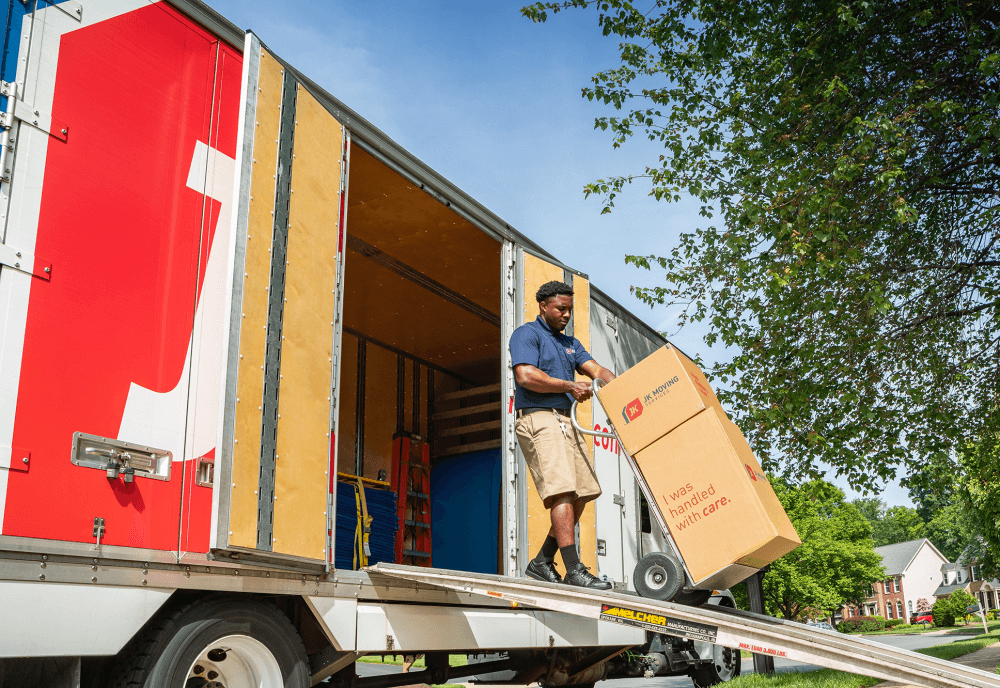Moving Companies: Key Benefits of Using Full Service Movers
Movers With Packing Services: Expert Moving Professionals Can Assist Make Your Shift Smooth And Stress-Free
History and Evolution of Moving Providers
The Dawn of Moving: From Muscle to Devices
Photo this: a handful of strong males hauling heavy trunks on wood carts, browsing cobblestone streets with sweat and determination. Before the contemporary moving market took shape, moving was a harsh, labor-intensive job. In ancient times, relocation often suggested depending on large physical strength and rudimentary tools. The absence of specialized services meant households and merchants needed to coordinate every detail themselves, typically running the risk of damage or loss.
But isn't it remarkable how requirement fuels innovation? As cities broadened and commerce thrived, the need for efficient, trusted more info moving solutions ended up being glaringly obvious. Get in the era of horse-drawn wagons and later on, motorized lorries, which reinvented how valuables traveled from one location to another.
Industrial Revolution: The Catalyst for Change
The 19th century's commercial boom improved lots of elements of life, including how individuals moved. Unexpectedly, city migration rose, and with it, the need for professional movers increased. No longer was moving a simple task; it developed into a specialized service offering:
- Packaging know-how to secure delicate items
- Organized loading methods taking full advantage of space
- Transportation services tailored to various ranges
This duration marked the birth of business devoted entirely to moving, laying the foundation for today's complex logistics and customer-centric methods.
Technological Developments and Their Impact
Can you imagine moving without modern-day equipment? The arrival of hydraulic lifts, forklifts, and pallet jacks transformed the industry overnight. All of a sudden, movers might handle bulky furniture and heavy devices with ease, reducing injuries and enhancing effectiveness.
The integration of digital innovation stimulated a new wave of development. GPS tracking, online reservation platforms, and real-time stock management have actually ended up being staples in the moving services landscape. These tools not just improve openness however likewise empower clients to stay linked and informed throughout their moving journey.
Key Milestones in Moving Services Advancement
| Period | Advancement | Significance |
|---|---|---|
| Ancient Times | Manual work and standard carts | Structure of moving as a necessity |
| 19th Century | Horse-drawn wagons and packing services | Birth of expert moving companies |
| 20th Century | Motorized trucks and mechanized devices | Increased performance and scale |
| 21st Century | Digital integration and GPS innovation | Boosted customer experience and logistics |
Reflections on the Journey
Reflecting on the advancement of movers, one might question: how did an easy act of transporting valuables end up being a sophisticated market? It's a tale of strength, adaptation, and constant improvement. From the sweat-soaked streets of old to the precision-driven operations these days, the history of moving services is as dynamic as the people who rely on them.
Next time you pack a box or work with a mover, think about the layers of history ingrained in every step. The journey of movers encapsulates human resourcefulness, changing what was when an overwhelming task into a seamless experience.
Exploring the Spectrum of Moving Services
When the time concerns shift your life from one address to another, the variety of moving services offered can seem like browsing a maze. Do you need a basic loading and discharging crew, or does your move demand the finesse of full packaging and unpacking? Comprehending the subtleties can save hours of disappointment and unforeseen costs.
Typical Kinds Of Moving Providers
- Regional Moves: Designed for movings within a city or metropolitan location, these services usually operate on a per hour basis, perfect for short distances.
- Long-Distance Relocations: Covering moves beyond 100 miles, these need more coordination, from logistical planning to protect transportation, often priced by weight and range.
- Full-Service Relocations: Movers manage everything-- packaging, loading, transferring, dumping, and sometimes even unloading. Perfect for those pressed for time or energy.
- Self-Service Relocations: You pack and load your personal belongings, while the company handles transportation and discharging. A happy medium offering cost savings and some benefit.
- Specialized Relocations: For delicate, large, or valuable items like pianos, antiques, or artwork, needing customized devices and know-how.
Expert Tips to Browse Your Moving Service Choices
- Focus on Flexibility: Pick a service that adjusts to unforeseen hold-ups or last-minute changes-- rigid schedules can turn a smooth relocation into a logistical problem.
- Inspect Insurance Coverage Options: Not all moving business offer the same level of security. Understanding your coverage can avoid distress if something goes awry.
- Request Detailed Inventories: An accurate product list prevents disputes and ensures responsibility, especially when dealing with long-distance or specialized relocations.
- Think About Season: Seasonal demand can affect availability and rates. Early reserving during off-peak seasons may give better service and flexibility.
- Ask About Packaging Products: Top quality boxes, bubble wrap, and cushioning can be the difference in between a scratched treasure and a pristine arrival.
Table: Service Characteristic Compared
| Service Type | Who Packs? | Transportation Mode | Normal Rates Design | Perfect For |
|---|---|---|---|---|
| Local Move | Client or Movers | Truck | Hourly | Short distances, little loads |
| Long-Distance Move | Movers | Truck or Container | Weight & & Distance | Cross-state or local relocation |
| Full-Service Move | Movers | Truck | Flat or Weight-Based | Time-sensitive, high-stress moves |
| Self-Service Move | Client | Truck or Container | Flat or Per hour | Cost-conscious, hands-on movers |
| Specialty Move | Movers with expertise | Specialized Equipment | Customized Quote | Delicate or important items |
The Unseen Intricacy Behind Each Option
Have you ever wondered why moving appears simple and easy on tv however develops into a waterfall of last-minute choices in real life? The fact lies in the complexities of each service type. Full-service moves might seem like a luxury, but the know-how included in packing fragile heirlooms or disassembling bulky furnishings is a craft sharpened over years. On the other hand, choosing for a self-service relocation might conserve cash, however it requires an eager understanding of how to pack effectively-- did you understand that stacking oddly shaped boxes improperly can cause internal moving throughout transit, wrecking fragile contents?
Choosing the ideal kind of moving service is not almost benefit-- it's about protecting your memories and investments. What's your move's story going to be?

Packing and Moving Techniques
Ever attempted to fit a luggage that simply won't close? That's the type of puzzle expert movers fix daily-- however on a much larger scale. The secret lies not in strength however in tactical placement and smart use of area. Packing isn't merely about packing items into boxes; it's an art form where every inch counts.
Layering for Success
Picture a painter layering colors to produce depth. When packing, start with much heavier products at the bottom, then cushion with softer materials like bubble wrap or towels. This avoids damage and optimizes box stability. Strangely formed items can slip into gaps, lowering squandered area.
- Wrap fragile products individually with tissue or foam to prevent scratches.
- Use clothes as padding-- it's both effective and environment-friendly.
- Fill empty spaces with packing peanuts or crumpled paper to decrease motion.
Labeling: The Unsung Hero

What excellent is ideal packing if you invest hours searching through boxes? Comprehensive labeling is a game-changer. Instead of vague tags like "Cooking area," attempt this method:
| Label | Description | Concern |
|---|---|---|
| Delicate - Glassware | Manage with care, includes delicate items | High |
| Basics - Very First Night | Items needed instantly after moving | Immediate |
| Books - Research Study Room | Stacked, heavy books | Medium |
Strategic Packaging Tips
- Disassemble big furniture and keep screws in labeled bags taped to the pieces.
- Usage uniform box sizes when possible-- stacking becomes much easier and much safer.
- Do not overpack boxes; weight limitations exist for a factor. Go for 40-50 pounds max.
- Wrap furniture edges with moving blankets to avoid scratches during transit.
- Seal boxes with top quality packaging tape-- double layers on the bottom are essential.
Why do some movers swear by a color-coded system? Since it removes uncertainty on moving day. Appoint each room a color and mark boxes appropriately. This small step can save hours when dumping and unloading.
Packing and moving demand accuracy-- like a chess video game where every move counts. Have you ever saw how some movers deal with large items easily? They utilize angles and pivot points to navigate tight corners without damage. It's not muscle; it's method.
Hidden Struggles Behind the Moving Van Doors
Ever watched a team of professional movers carry a grand piano through a narrow doorway and wondered how they pull it off without a scratch? The art of moving isn't simply muscle and trucks; it's a fragile dance with unpredictability. Weather can turn from a sunlit blessing to a torrential threat in minutes, turning a simple drive into a logistical labyrinth.
One notorious obstacle is the labyrinthine design of some homes or homes. Staircases too tight for dollies, entrances narrower than standard boxes, or elevators that hardly fit a couch-- these physical peculiarities demand inventive services on the area. Movers typically resort to non-traditional strategies like taking apart furnishings or using personalized padding to safeguard both the item and the property.
Precision Packaging: More Than Simply Wrapping
It's tempting to believe packaging is simply stuffing boxes, but the reality is an intricate puzzle of weight circulation and fragility. Movers must expect how products will shift throughout transit-- a miscalculation can mean shattered heirlooms or dinged up appliances. The trump card? Strategic layering and using materials with particular shock-absorbing qualities.
- Bubble wrap is basic, however alternating it with foam sheets can dramatically decrease effect damage.
- Heavy items address the bottom; vulnerable ones nestle on top, cushioned by soft textiles.
- Labeling boxes not just by contents however by dealing with instructions guarantees quicker, much safer discharging.
Another less talked about strain is the psychological toll. The clock ticks non-stop, and every hold-up ripples through tight schedules. Staying calm amidst chaotic last-minute modifications needs imagination and group synergy.
Traffic Congestion and Timing: The Undetectable Challengers
| Barrier | Specialist Strategy | Impact |
|---|---|---|
| Urban blockage | Path optimization apps and versatile scheduling | Decreases delays and fuel consumption |
| Parking restrictions | Pre-arranged licenses or tactical parking nearby | Prevents fines and time loss |
| Unpredictable weather | Waterproof coverings and contingency strategies | Maintains the condition of items and devices |
Do you actually understand what it takes to keep a moving day on track? It's not practically strength or stamina; it has to do with foresight, adaptability, and a deep understanding of every piece of the puzzle. The next time you see movers at work, remember: behind that smooth operation lies a series of calculated maneuvers and quick thinking that few ever notice.